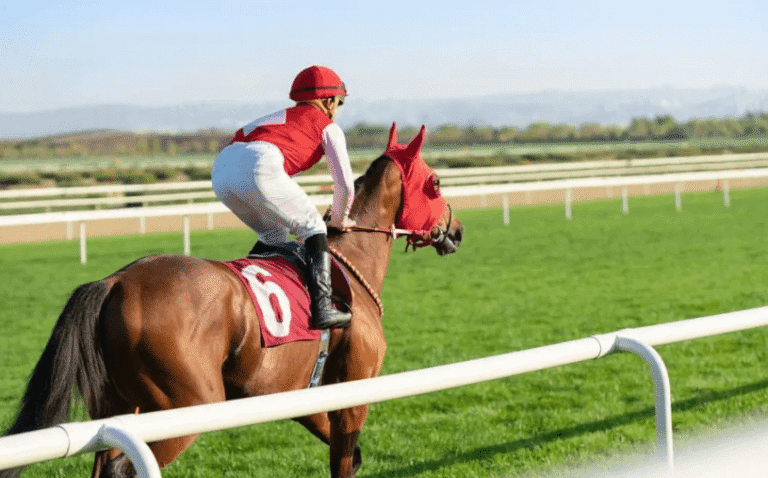Horse racing has always been a stage for greatness, producing champions whose names echo through history. But some racehorses become more than just winners—they transform into cultural icons, symbols of hope, and legends whose influence extended far beyond the racetrack.
These horses captivated the public with their stories, personalities, and lasting impact on the sport and society. Here’s a look at some of the famous racehorses who became legends off the track.
1. Seabiscuit – The Underdog Who Inspired a Nation
In the 1930s, during the Great Depression, America needed a hero. That hero came not in human form, but as a small, crooked-legged horse named Seabiscuit.
- On the Track: Seabiscuit overcame poor beginnings to become a racing star, winning the 1940 Santa Anita Handicap and defeating War Admiral in their legendary 1938 match race.
- Off the Track: Seabiscuit embodied resilience, determination, and hope for millions struggling through hard times. His story was immortalized in books, documentaries, and the 2003 Hollywood film Seabiscuit.
His legacy was less about victories and more about the spirit of perseverance, making him one of the most beloved horses in American history.
2. Secretariat – The Horse Who Redefined Greatness
Known as “Big Red,” Secretariat set the standard for excellence in horse racing. His 1973 Triple Crown run was so dominant that his record-breaking 31-length victory in the Belmont Stakes is still considered one of the greatest performances in sports history.
- On the Track: Secretariat broke records that still stand today.
- Off the Track: He became a household name, gracing the covers of Time, Newsweek, and Sports Illustrated—a rare honor for an animal. His dominance brought horse racing back into the spotlight in the 1970s.
Secretariat’s fame transcended racing, making him an enduring symbol of athletic perfection.
See also: Zenyatta: The Mare Who Defied Odds
3. Man o’ War – America’s First Superstar
Foaled in 1917, Man o’ War won 20 of his 21 races and became the first true celebrity racehorse in the United States.
- On the Track: His performances were so dominant that handicappers had to assign him record-breaking weights just to make races fair.
- Off the Track: Man o’ War became a national treasure, drawing thousands of visitors in retirement. His funeral in 1947 was broadcast on radio and covered like a presidential event.
He showed America that racehorses could achieve celebrity status much like human athletes.
4. Phar Lap – The Hero of Australia
In the late 1920s and early 1930s, Phar Lap emerged as a national hero in Australia during the Great Depression.
- On the Track: Phar Lap won the 1930 Melbourne Cup and 37 of his 51 races.
- Off the Track: He was adored for lifting the spirits of Australians in tough times. His mysterious death in 1932, while in the United States, only deepened his legend.
Today, Phar Lap’s preserved heart and hide are displayed in Australian museums, symbolizing his place in the nation’s cultural identity.
5. Red Rum – The People’s Horse of Britain
In the 1970s, Red Rum captured Britain’s heart by winning the Grand National three times (1973, 1974, 1977) and finishing runner-up twice.
- On the Track: His ability to conquer the world’s toughest steeplechase was unparalleled.
- Off the Track: Red Rum became a symbol of grit and endurance. After retirement, he opened supermarkets, switched on Christmas lights, and appeared in countless public events.
He was more than a horse—he was a British folk hero, bridging the gap between sport and popular culture.
6. Zenyatta – Queen of the Comebacks
In the modern era, few horses have matched the charisma of Zenyatta, the towering mare who thrilled fans from 2007 to 2010.
- On the Track: She won 19 of 20 races, including the 2009 Breeders’ Cup Classic, becoming the first female to ever do so.
- Off the Track: Her flamboyant pre-race “dance” and dramatic running style made her a fan favorite, drawing new audiences to racing and inspiring a devoted following.
Her story of grace and power reminded fans that racing legends come in many forms.
7. American Pharoah – The Modern Icon
In 2015, American Pharoah ended a 37-year drought by winning the Triple Crown. His Belmont Stakes victory was one of the most emotional moments in modern sports.
- On the Track: He didn’t stop at the Triple Crown—he went on to win the Breeders’ Cup Classic, becoming the first horse ever to complete the “Grand Slam of American Racing.”
- Off the Track: American Pharoah rekindled interest in horse racing, appearing in major media outlets, on merchandise, and as a modern-day superstar of the sport.
He proved that legends could still be made in the 21st century.
The Shared Legacy of Racing Legends
What unites all these horses is not just their victories but their ability to inspire beyond the racetrack:
- Seabiscuit gave hope to a struggling nation.
- Secretariat set new standards for greatness.
- Man o’ War showed horses could be national celebrities.
- Phar Lap became a symbol of resilience for Australia.
- Red Rum became Britain’s folk hero.
- Zenyatta inspired with her charisma and power.
- American Pharoah revived the magic of the Triple Crown.
These horses remind us that racing is not just about competition—it’s about the connection between humans and animals, and the stories that live on long after the races are run.
Conclusion
The world of horse racing has produced countless champions, but only a select few transcend the sport to become true legends off the track. They are remembered not just for their speed or strength, but for their ability to capture the hearts of millions and symbolize resilience, hope, and inspiration.
From Seabiscuit’s underdog story to American Pharoah’s historic triumph, these horses left legacies that extend far beyond the racetrack. Their names will continue to echo in history, reminding us that greatness is not just measured in victories but in the impact left behind.
